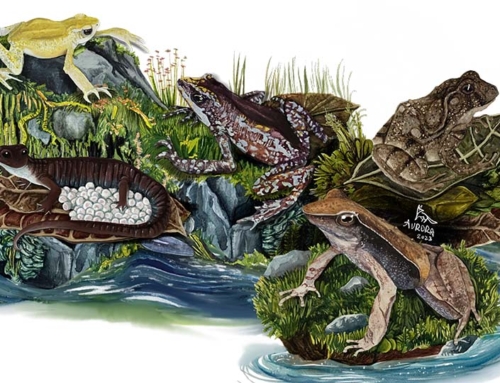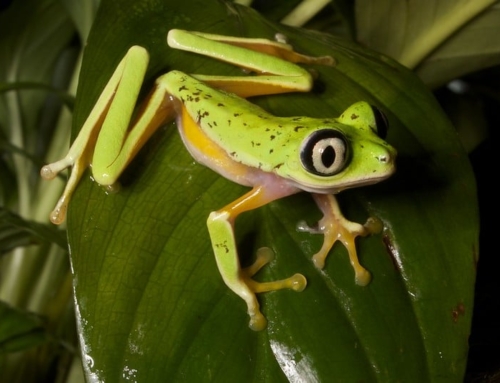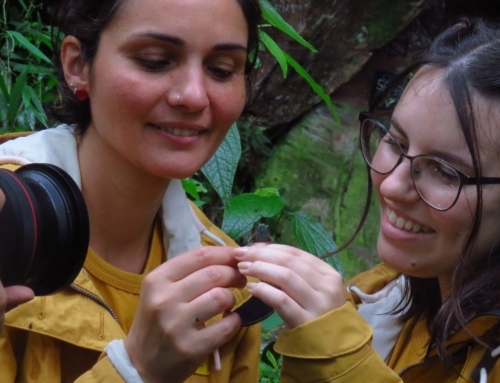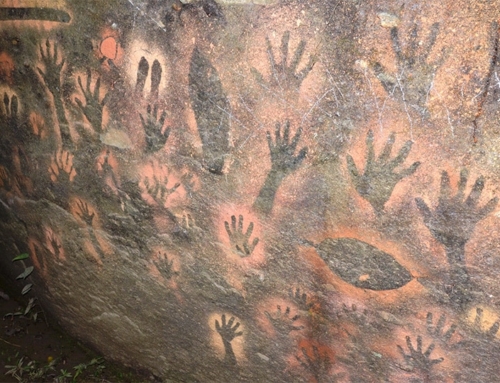As many as 222 amphibian species could already have gone extinct, and 2,873 are in danger of extinction, says the second Global Amphibian Assessment, which has been published on 4 October 2023 in the journal Nature.
This is our third and final piece on the second Global Amphibian Assessment. Part I summarised the science, Part II told the stories of the four confirmed extinctions, and this final piece will focus on species recovery. Conservation works! There is hope.
The Nature paper concludes with a call to action which is, like everything else, supported by the science. 63 amphibian species have improved in conservation status since 1980 thanks to conservation; 94% of these were the result of habitat protection and improved habitat management.
The Sierra Juarez Robber Frog is one of the species with a remarkable story of hope for the future of amphibians. In the last assessment (2004), this miniature Mexican frog was assessed as Critically Endangered, but with a note that it might actually be extinct due to chytridiomycosis.
However, the species was observed again in 2009, and thanks to Mexico’s Payment for Hydrological Services Program, which compensates landowners in return for looking after their land and water sources, this species’ habitat now benefits from a high level of protection and the species was reassessed as Near Threatened (conservation dependent) in 2022. This programme is also attributed for the same improvement in status for the Sierra Juarez Brook Frog.
 Green frog on branch
Green frog on branchThe Sierra Juarez brook frog was reclassified from Endangered to Near Threatened in the latest assessment due to conservation action. Image: Chris Grünwald CC BY-NC 4.0 DEED
A similar system in Costa Rica is the reason why the La Estrella salamander and Richard’s salamander both improved from Near Threatened to Least Concern.
Various national parks can be attributed to the improvements for several species as well (usually those with small ranges which are entirely protected once the parks were under strong management): e.g., Kalakad Mundanthurai Tiger Reserve (Western Ghats, India) is mentioned in the rationale for three species’ improvements and the drastic improvement in the management of Kinabalu National Park (Sabah, Malaysian Borneo) in 2004 is attributed to seven species’ improvements.
Priority areas for amphibians
 A green frog with blue armpits
A green frog with blue armpitsThe obscure bush frog was reclassified from Vulnerable to Least Concern due to the management of established protected areas and effective protection of areas of lowland rainforest across its range in Brunei Darussalam and Malaysia (Sabah, Sarawak). Image © Saurabh Sawant
The data in the second Global Amphibian Assessment provides a guide for how action for amphibians can be targeted and effective, and which areas should be prioritised for amphibian conservation. For example, as well as the Neotropics, other areas with large concentrations of threatened amphibians include western Cameroon and eastern Nigeria, the Eastern Arc Mountains of Tanzania, Madagascar, the Western Ghats of India, Sri Lanka, and central and southern China.
In Cameroon and Madagascar, without an established organisation already leading on amphibian conservation, the programme has supported local efforts to create organisations focused on saving amphibians: Miaro Ny Sahona (MISA) by two Malagasy scientists, Tsanta Rakotonanahary and Serge Ndriantsoa, and Herp Cameroon by Marina Kameni Ngalieu with support from Herp Conservation Ghana.
 Marina holding a frog
Marina holding a frogThe Amphibian Programme is helping Marina Kameni Ngalieu set up an organisation focused on conserving amphibians in Cameroon. Image: Marina Kameni Ngalieu
“Cameroon is one of the richest countries for amphibian and reptile diversity but there is no real conservation action plan focused on them,” says Marina. “Our country lacks specialists in this species, and there are too many things to do with not enough experts.
“But having an organisation to focus on them is the first step, and just recently we have achieved protection in one of Central Africa’s amphibian hotspots with the first sanctuary dedicated to Cameroonian amphibians and reptiles being created on Manengouba Mountain.”
As well as supporting on-the-ground species protection in priority regions and conservation research such as the Global Amphibian Assessment and identifying Key Biodiversity Areas, a key strand of the programme is building the capacity of amphibian conservation worldwide.
In addition to helping new organisations like MISA and Herp Cameroon, Synchronicity Earth has provided core support to the Amphibian Survival Alliance (ASA) since its founding in 2011 to help coordinate global collaboration between amphibian conservationists, and supported the monumental effort behind publishing the second Global Amphibian Assessment.





